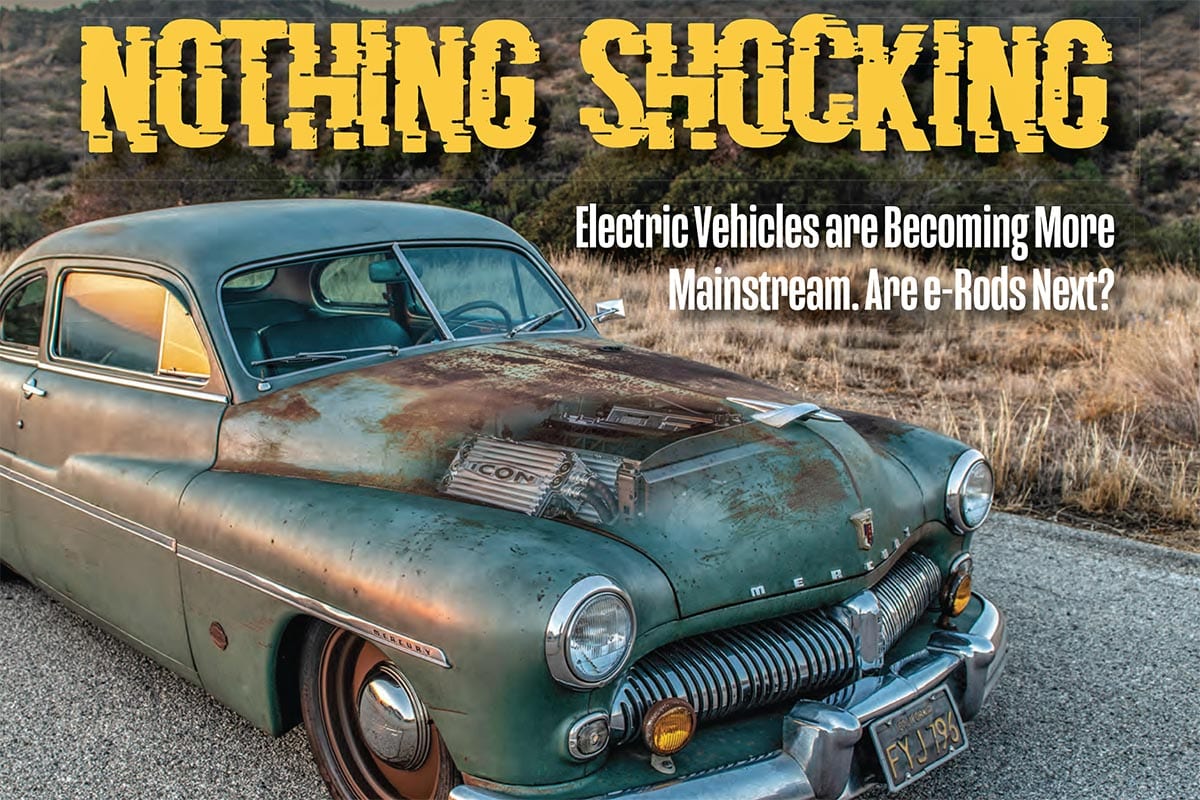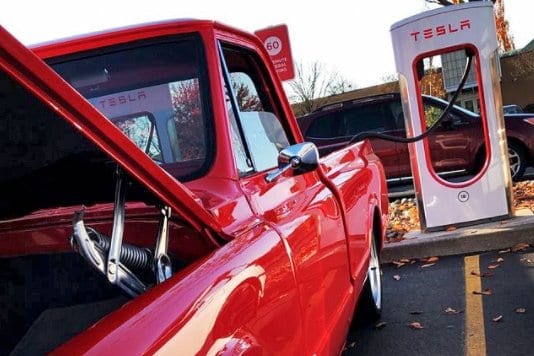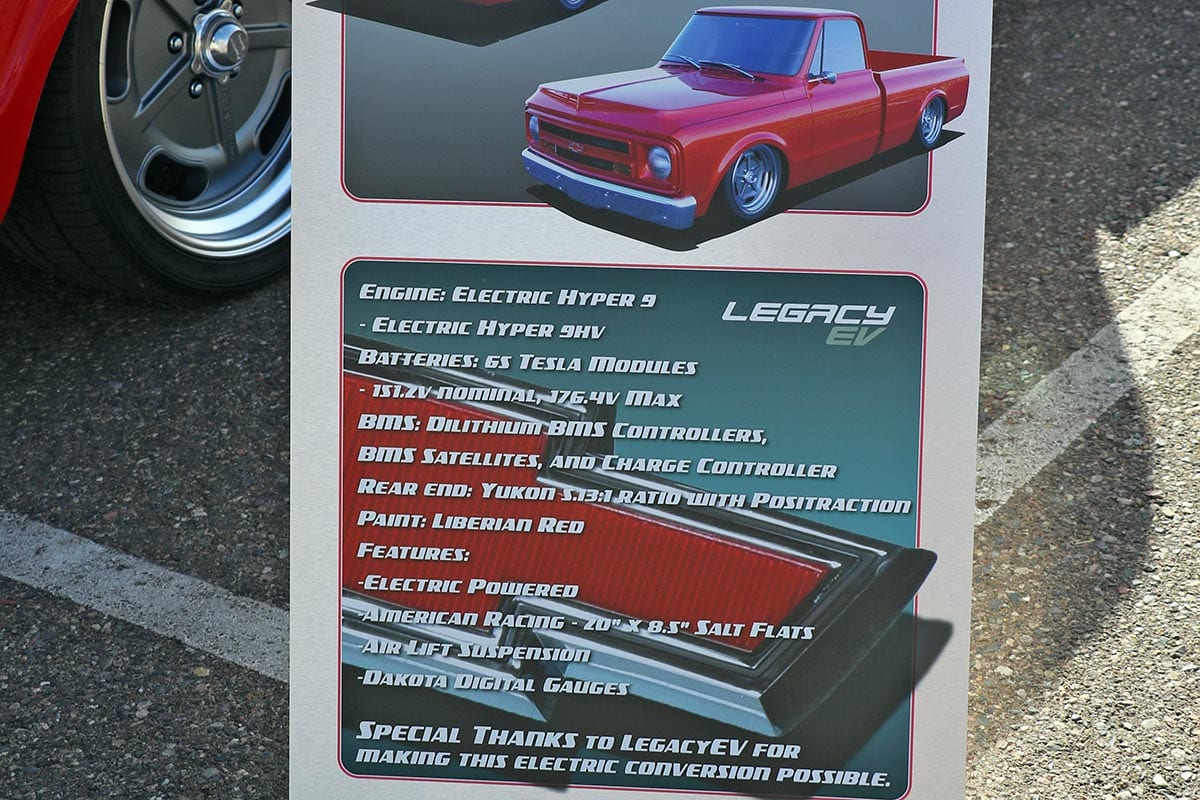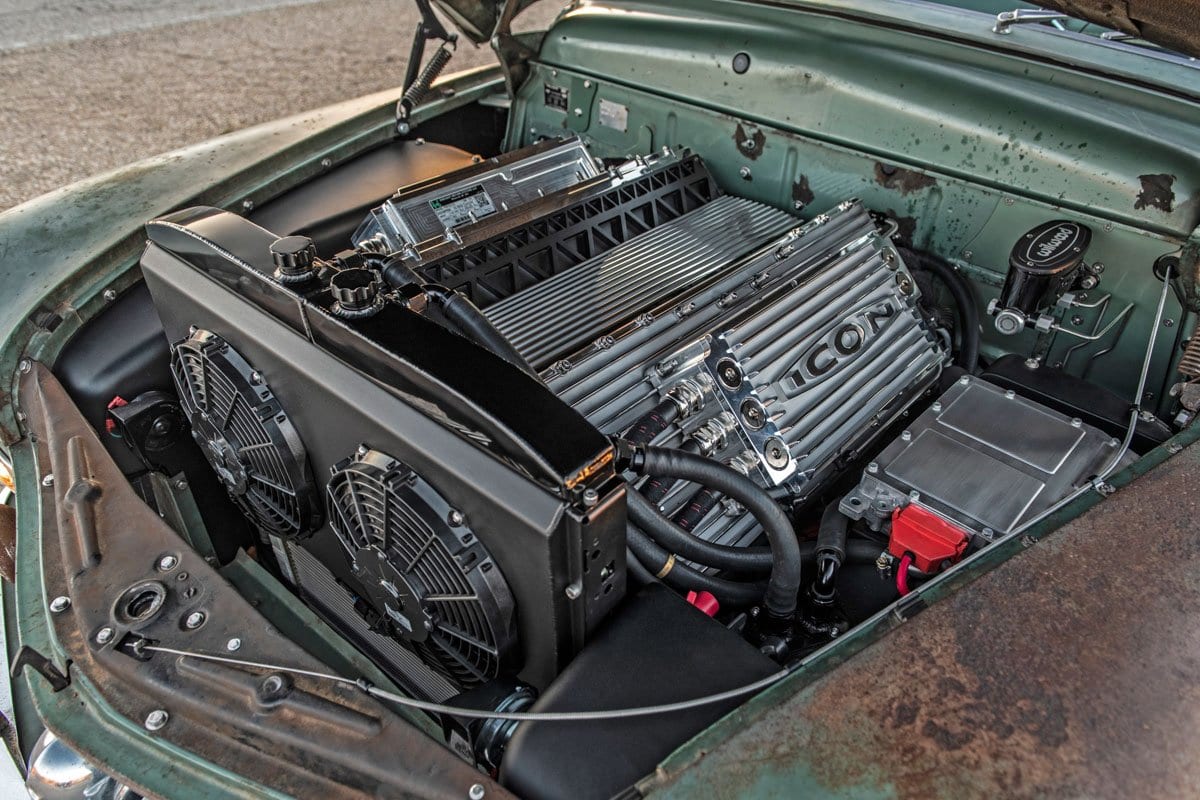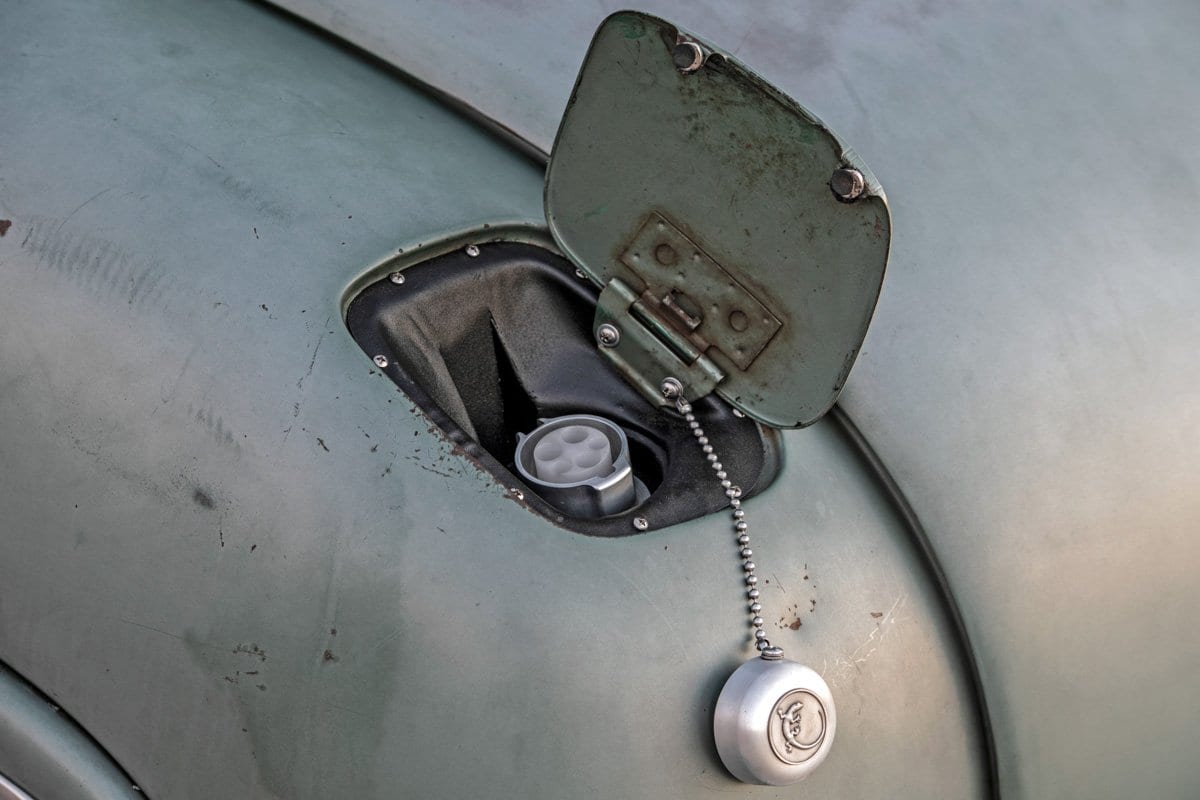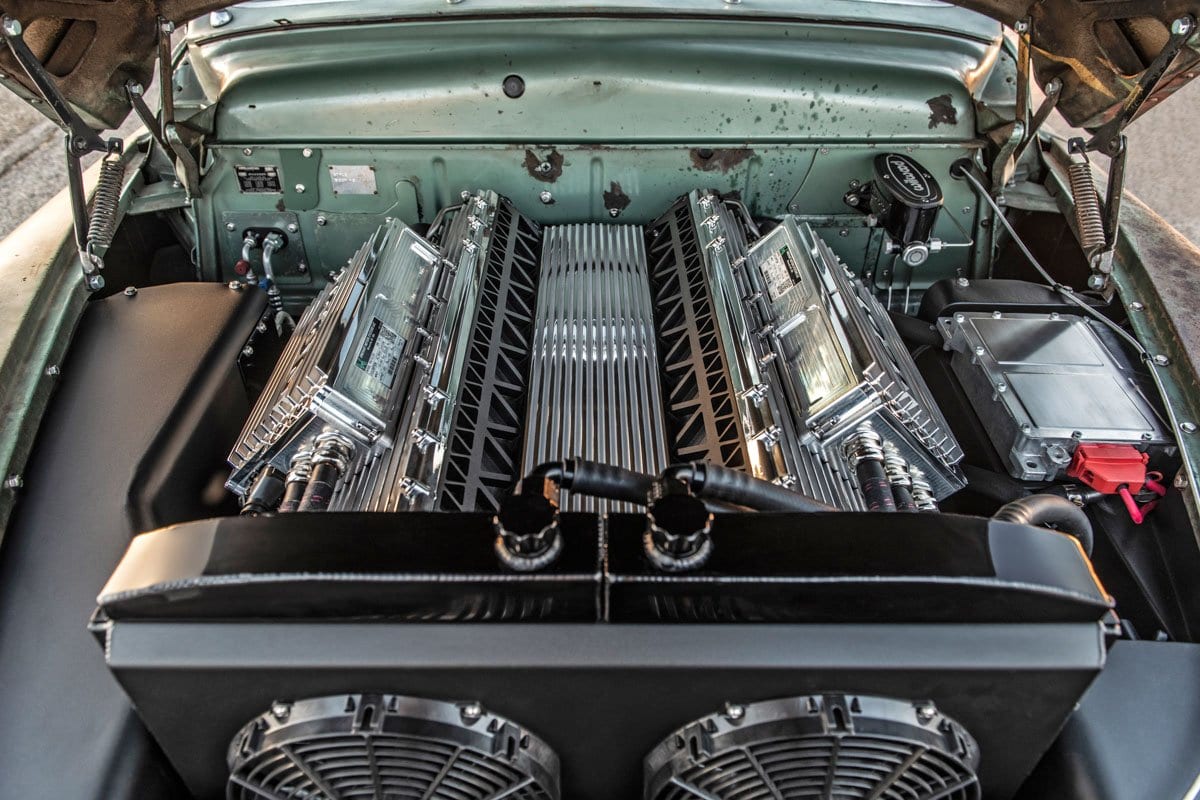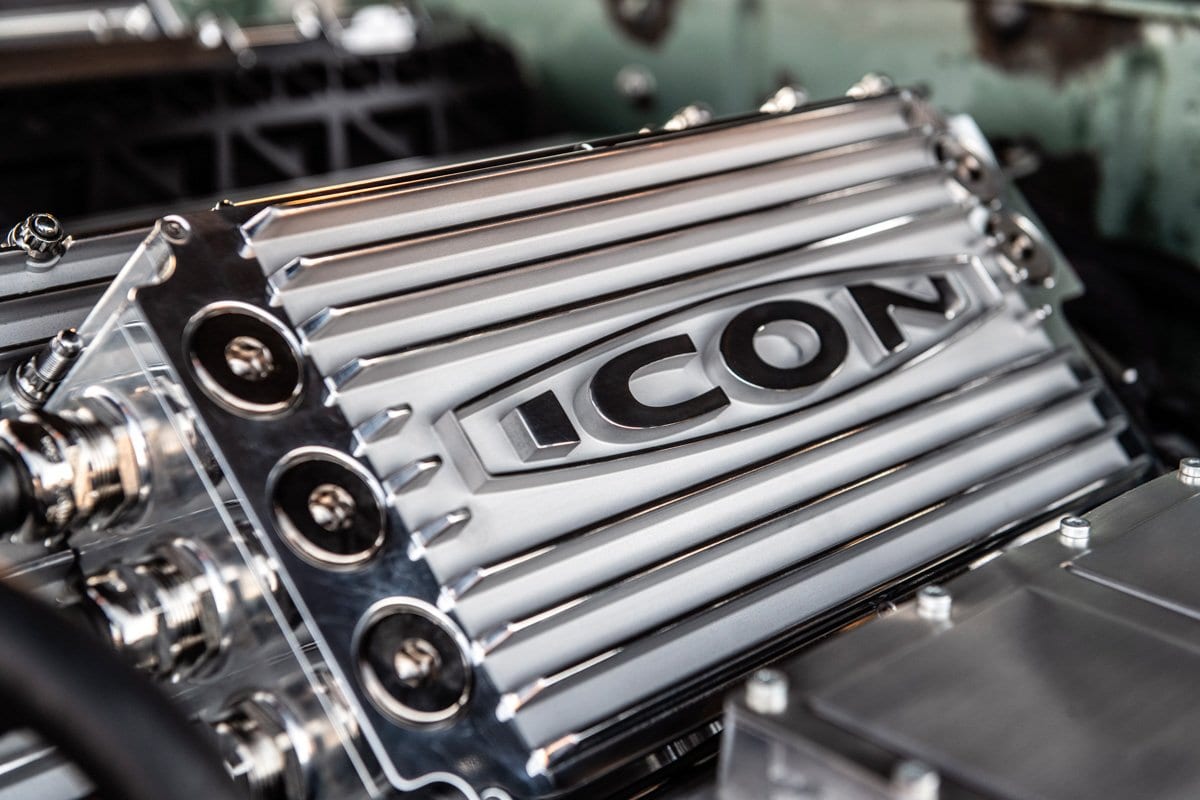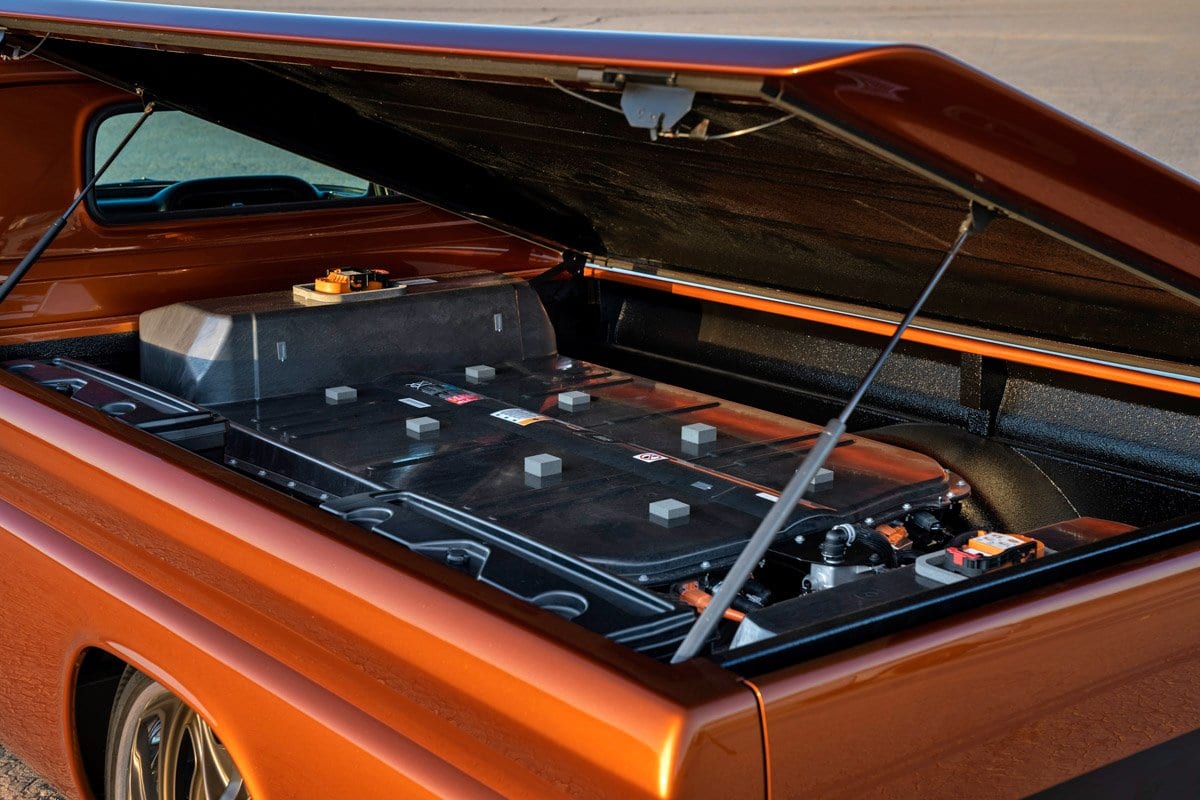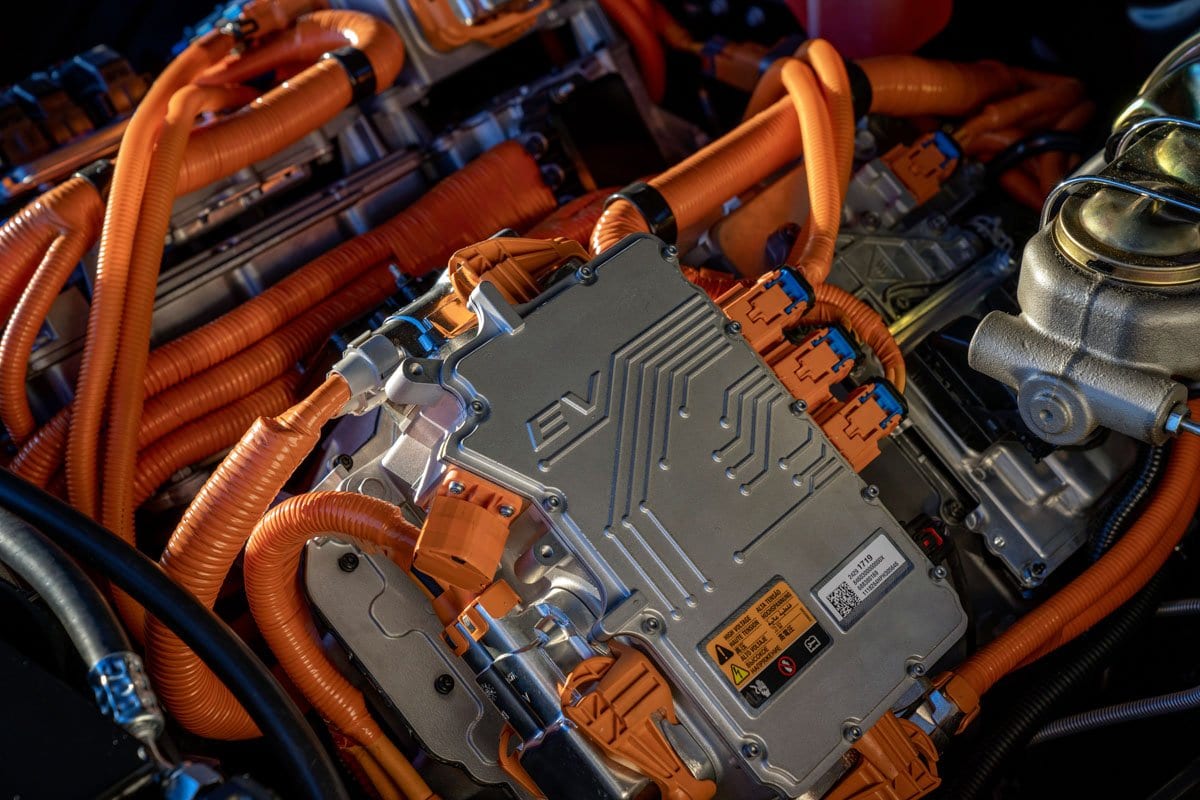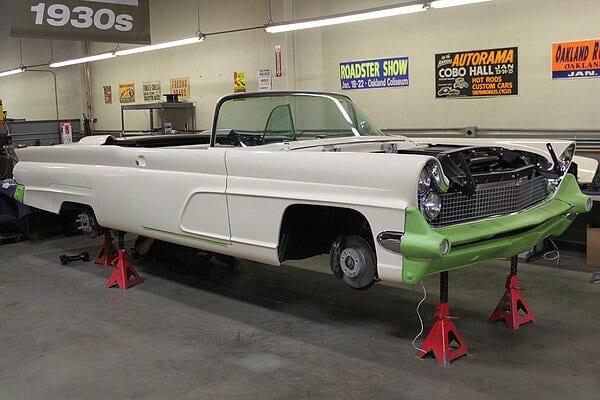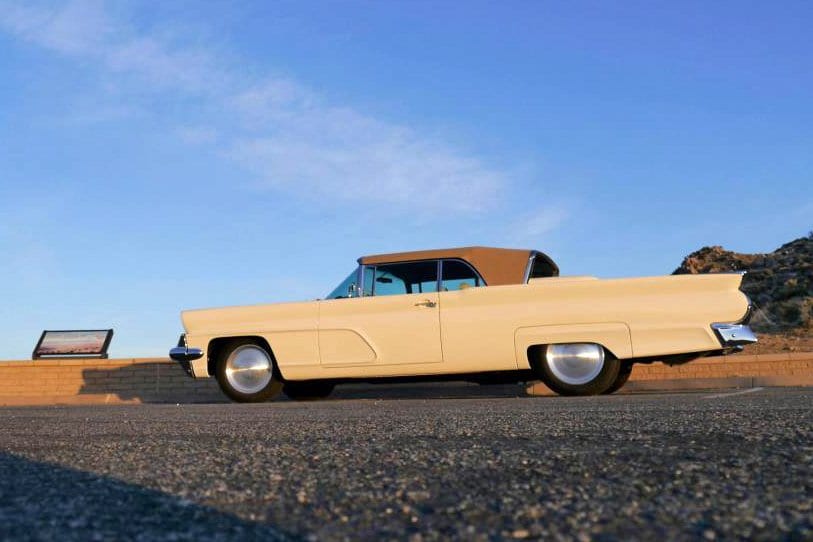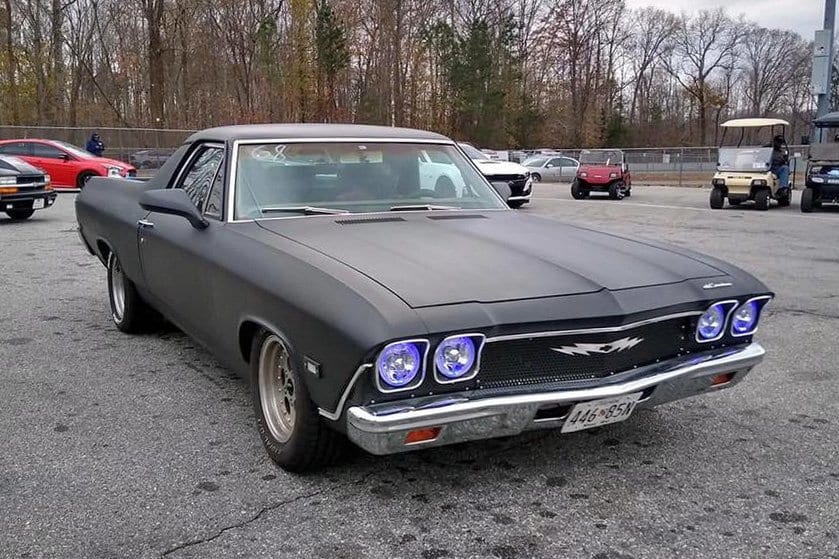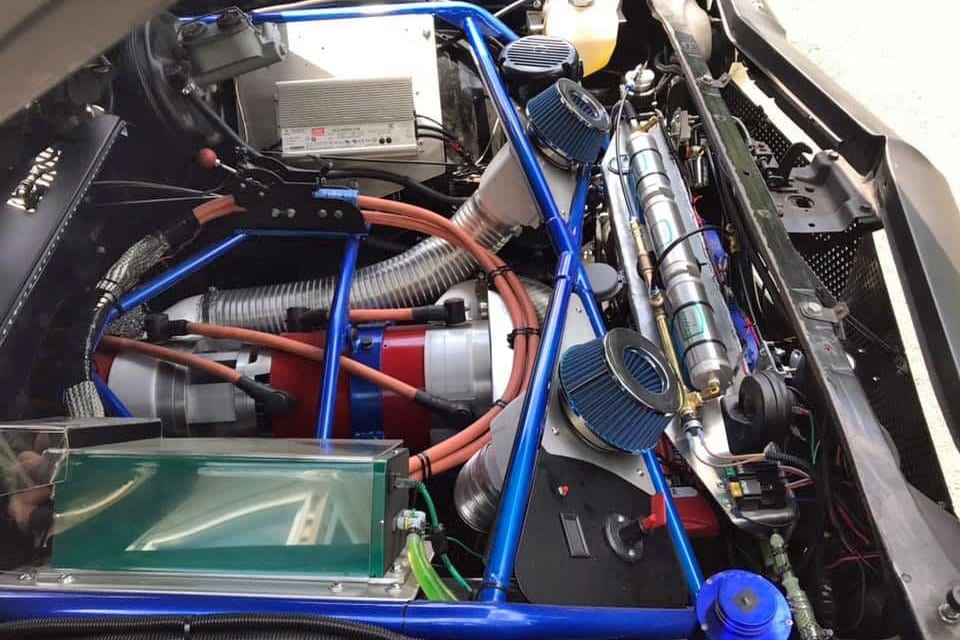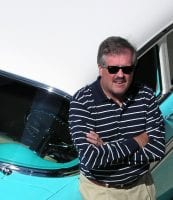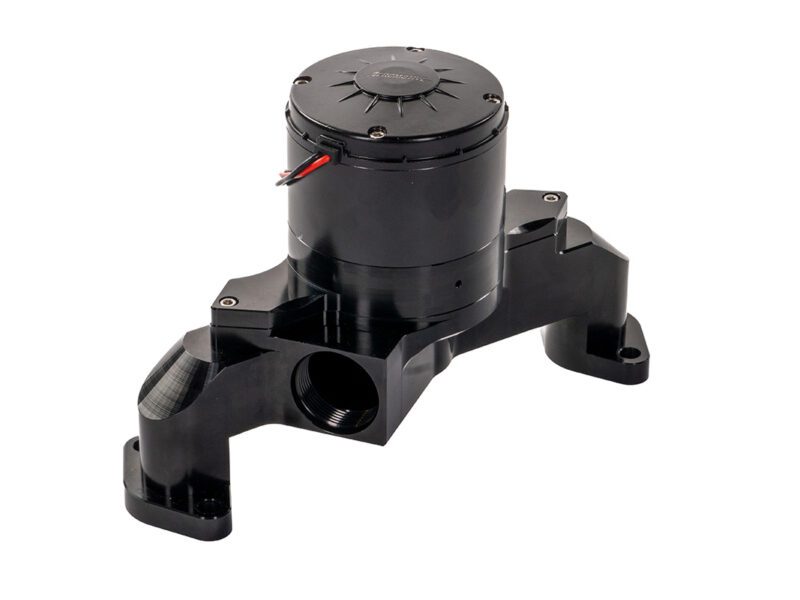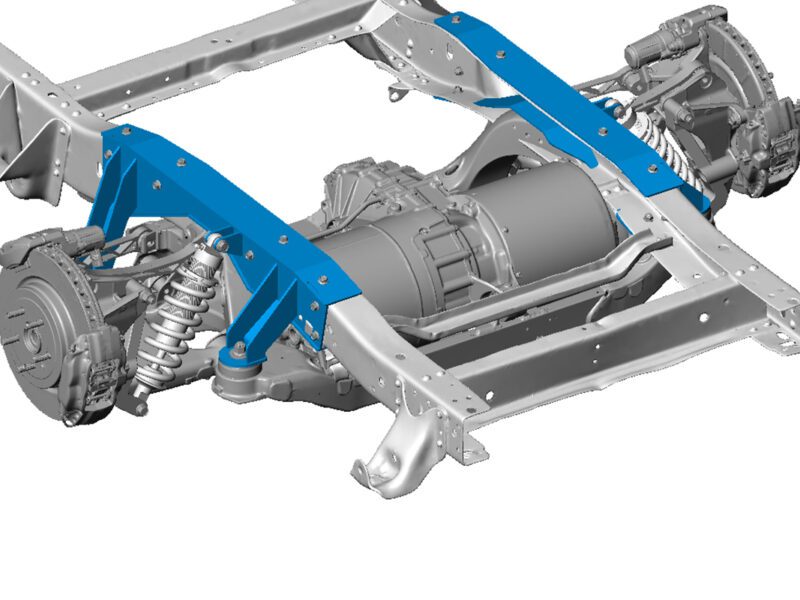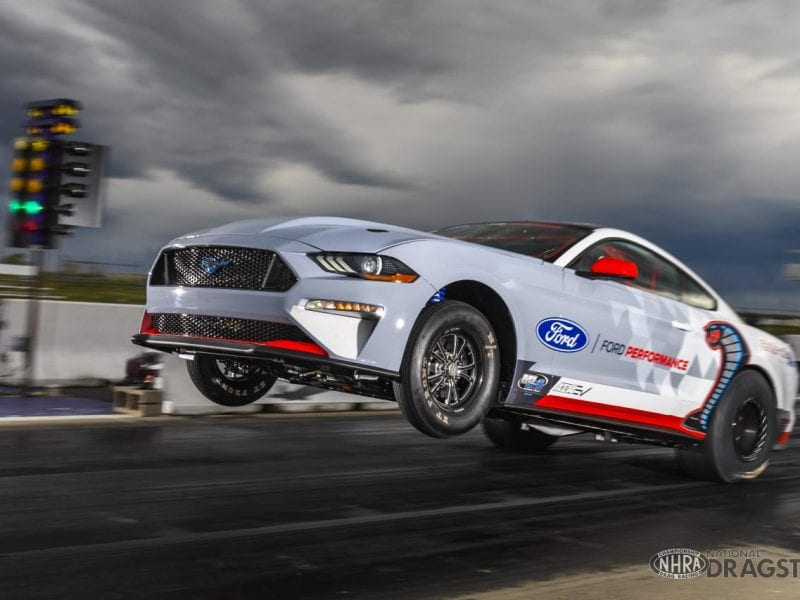Electric Vehicles are Becoming More Mainstream. Are Electric Hot Rods Next?
Is there an electric hot rod, custom, or vintage car in your future? Will electric “crate motors” crash the LS-swap party? Will car shows and cruise nights become rumble-free zones because electric-powered rides overtake thumping V8s?
It’s difficult to say what the future will bring to the vintage car hobby and we know that many dyed-in-the wool rodders are firmly devoted to internal combustion. We also know that sales of new electric vehicles continue to grow, and several states and countries are moving toward electric-only new vehicles in the future. On top of that, the instant-on performance of an electric motor can be quite impressive. So far, battery-driven hot rods, customs and muscle cars are still extremely rare; how rare and for how long is the question.
In the past few years we’ve seen a handful of EV classics at trade shows, events, and in the media. We wanted to plug into the EV scene, so to speak, and see where it might lead. Will these one-offs lay the groundwork for a full-fledged trend, or will plug-in rods remain a low-watt phenomenon?
What’s happening right now? There are several shops specializing in electric conversions, while a few traditional hot rod and specialty builders are exploring the technology and building electric-powers cars for customers. For example, San Diego-based Zelectric started converting vintage VWs and Porsches to electric power back in 2012. Their conversions start at just under $70,000, plus the cost of the vehicle.

Zelectric Motors uses “vintage icons, hand rebuilt to order” as one of its slogans and has built a customer following by performing EV conversions primarily on classic Porsches and Volkswagens like this van. The company’s website says their EV retrofits start at $68,000 if you supply the vehicle.
Legacy EV is a newer company that’s developing and selling component kits for electric vehicle conversions. Legacy displayed an e-powered ’71 C10 pickup built by Old Town Auto of Ridgefield, Washington, at last year’s Speedway Motors Southwest Nationals in Scottsdale. Earlier in the season at the RaceDeck Salt Lake Nationals, we saw a ’58 Chevy Apache powered by a Tesla Model S drivetrain, which was built by Electric 51 Speed Shop of Salt Lake City.
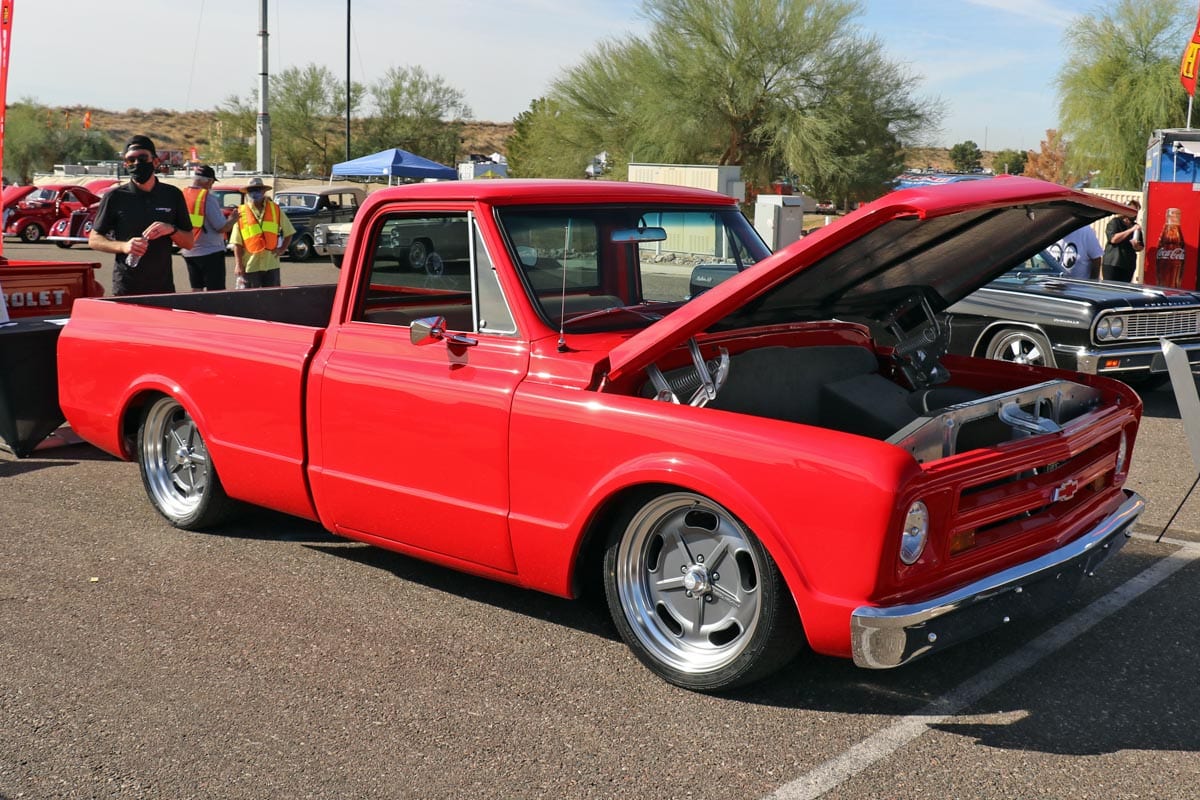
There’s no engine under the open hood of this custom ’71 C10, which was on display at the Speedway Motors Southwest Nationals last November in Scottsdale. It was being shown off by Legacy EV, a company that is developing and selling component kits for electric vehicle conversions. This particular conversion used an Electric Hyper 9 motor, Tesla batteries, and BMS controllers. It was built by Old Town Auto in Ridgefield, Washington.
Electrifying SEMA
Some of our first glimpses at electric-powered vintage vehicles have come at the annual SEMA Show in Las Vegas. One of the breakout vehicles at the 2018 show was a ’49 Mercury that looked original and weathered on the outside but was powered by a Tesla battery pack (and other components) generating 400 horsepower and 470 lb-ft of torque, with a 150-200-mile range. The conversion was done by Southern California specialty builder ICON. The cost? Exact numbers were unavailable, but estimates were well into the six-figure category.
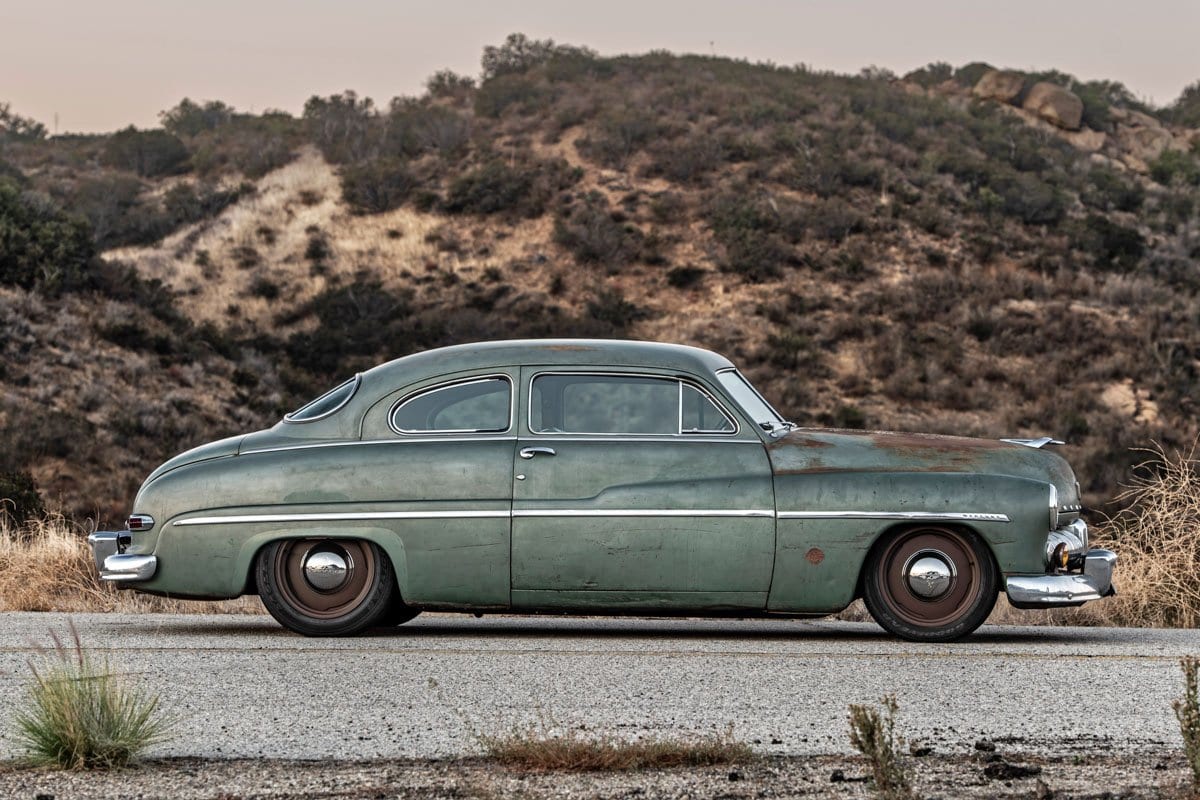
California-based specialty builder ICON asked, “why are all production EV vehicles devoid of soul?” and then answered with this Derelict-series ’49 Mercury. The powertrain is all-modern and was a co-engineering exercise between ICON and Stealth EV. The dual electric motors provide 470 lb-ft of torque and the equivalent of 400 horsepower, with a top speed of 120mph. A full Tesla Performance 85kWh battery array is strategically fit throughout the vehicle for weight balance and the car is capable of an estimated 150- to 200-mile range with a 1.5-hour full recharge capability. The custom aluminum “engine” under the hood actually houses the battery controllers and a few of the Tesla modules.
Most of the major manufacturers debut concept vehicles at the SEMA Show and 2019 was no exception when Chevrolet debuted the E-10, a ’62 C10 pickup converted into an electrified hot rod. Boasting 450 horsepower the truck relies on the powertrain from a Chevy Bolt, the company’s only mass-produced vehicle, and other components from the GM parts bin. Other tweaks push the truck’s 0-60 time to about 5 seconds with speculated quarter-mile times in the high 13-second range.
The E-10 concept did attack one of the common complaints about electric hot rods and muscle cars – the lack of a throaty V8 engine exhaust note. The E-10 is fitted with a sound simulator with four pre-programmed soundtracks, ranging from an LS7 Z28 tuned for the track to a generic V8 engine.
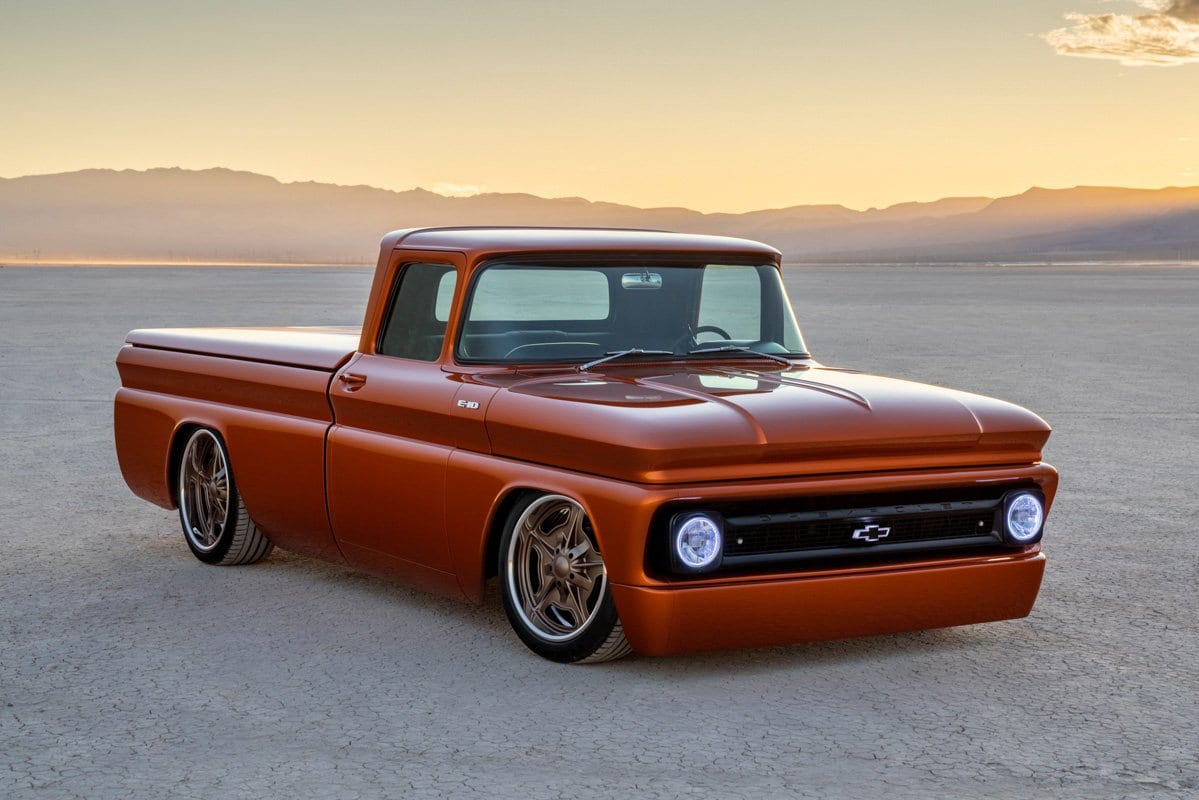
Chevrolet showcased its E-10 Concept pickup at the 2019 SEMA Show. It’s a ’62 C10 powered by an electric Connect & Cruise concept crate propulsion package offering approximately 450 horsepower, using proven components from the Chevrolet Bolt EV. Chevrolet said it wanted to demonstrate the electric conversion possibilities for classic vehicles and equipped the truck with a double stack of Chevrolet Performance concept electric crate motors (eCrate) and a conventional SuperMatic 4L75-E automatic transmission. Power to the drive stack comes from the pair of independent Chevrolet Bolt EV power electronics and two production Bolt EV battery packs mounted in the truck’s bed.
We know you’ll ask: Yes, aftermarket sound simulators are on the market, but most aren’t cheap. Prices can exceed $2,000.
While the E-10 was strictly a concept vehicle, Chevy execs said at the time that the E-10 project, as well as the eCOPO Camaro concept in 2018, could lead to the development of a “crate” electric propulsion system utilizing current production components. Move ahead to today and General Motors is expected to introduce the eCrate Electric Connect and Cruise system later this year. The system will include the electric drive unit and battery combo along with other components.
What About Traditional Shops?
If you’re concerned that your favorite hot rod shop will be buried with orders for e-powered builds, there’s no need to worry for the near future. Electric conversions in old cars and trucks are still at the very early stage of growth. Few shops are stocking electric motors and battery packs, but several established shops are seeing signs of an emerging trend.
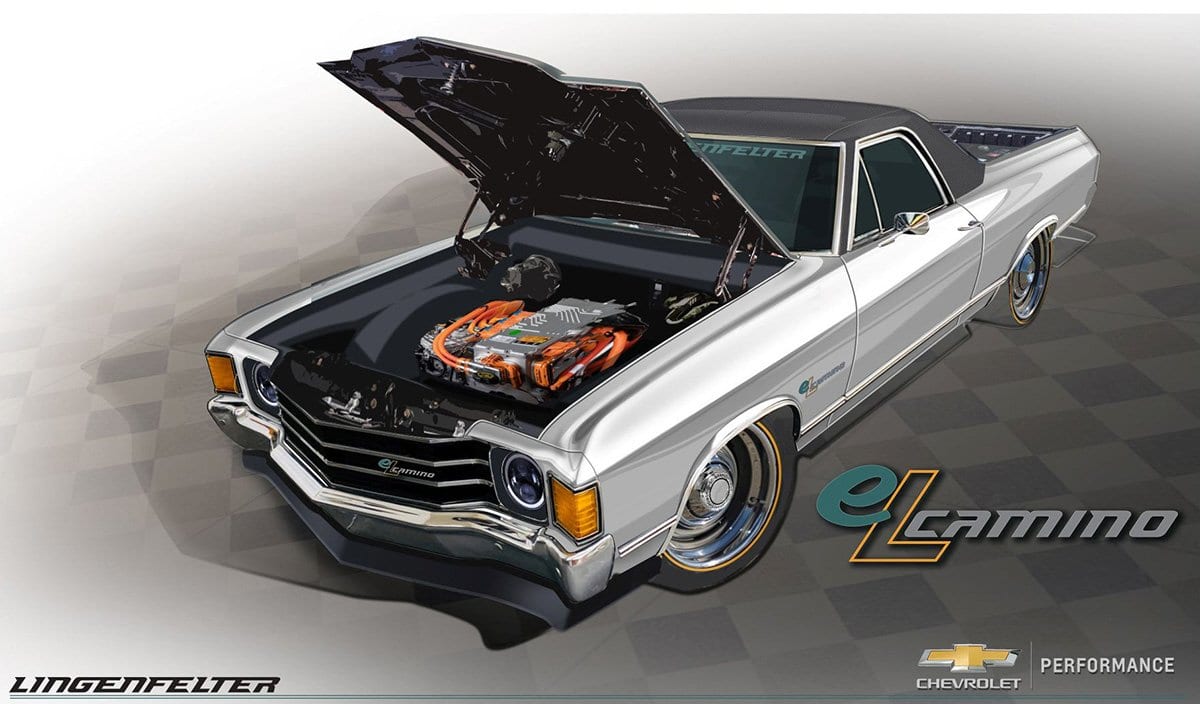
Lingenfelter Performance Engineering has been selected by GM as the first aftermarket company to develop a Certified Installer Program for GM’s eCrate Electric Connect and Cruise system. Part of that development includes building and testing the eL Camino, an electric-powered classic El Camino. “We will keep everyone plugged in with our exciting project,” Lingenfelter says.
Leonard Lopez of Dominator Street Rods in Tracy, California, experimented with electric power back in the mid-’90s, building a three-wheeler from scratch for a Cal-Berkeley professor. The size and weight of that era’s batteries was a big challenge, Leonard says now.
“It’s [battery technology] has come a long way since the ’90s,” he said. He is working with a customer these days who bought a wrecked Tesla to salvage the drivetrain and battery pack to serve as the power for a steel ’32 Ford hot rod.
“It needs to be steel because of the battery size [and weight],” Leonard says. That issue certainly limits the option of upgrading a glass-bodied car.
Lack of knowledge about electric conversions probably hinders wider interest in the trend. Sean Provost of Provost Motorsports in Woodland, California, agrees. “I think a lot of people don’t know yet that you can buy the setups to convert,” he says. But Sean does have a customer who wants him to build two ’69 Camaros, one that’s electric-powered and another with traditional V8 guts. “He wants to compare the two with drivability and performance,” he said.
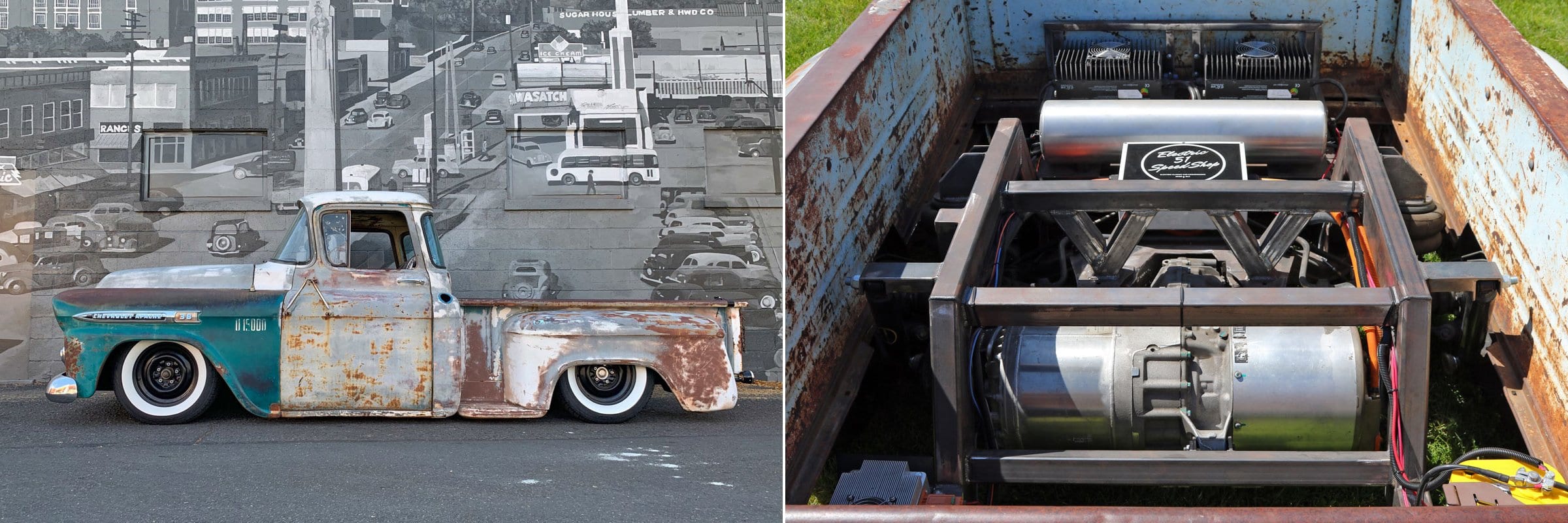
We saw Casey Loter’s ’58 Apache on display at the Goodguys RaceDeck Salt Lake Nationals last summer. It combines a patina’d exterior with a modern electric drivetrain from a Tesla Model S producing the equivalent of more than 400 horsepower. An ’81 Camaro front suspension and GM independent rear were part of the build, along with Wilwood disc brakes and RideTech Shockwaves. Building the truck led to the creation of Electric 51 Speed Shop in Salt Lake City.
Jonathan Goolsby of Goolsby Customs in Hueytown, Alabama, is hearing a lot of talk among his customers and fellow shop owners about electric power, especially given the performance of the new electric cars. “I do think it’s the future and in a matter of time you’ll see muscle cars out with electric power,” Jonathan says. “Builders are always looking to one-up their next build and electric power would certainly stir things up a bit.”
What About Performance?
Electric-powered race cars have been around for years. The National Electric Drag Racing Association was formed in 1996 by a group of ampheads (their name, not ours) after the Saturday Night Electric Drags at Firebird International Raceway in Arizona. The group developed classes and safety rules and has been holding electric car drag races across the country since.
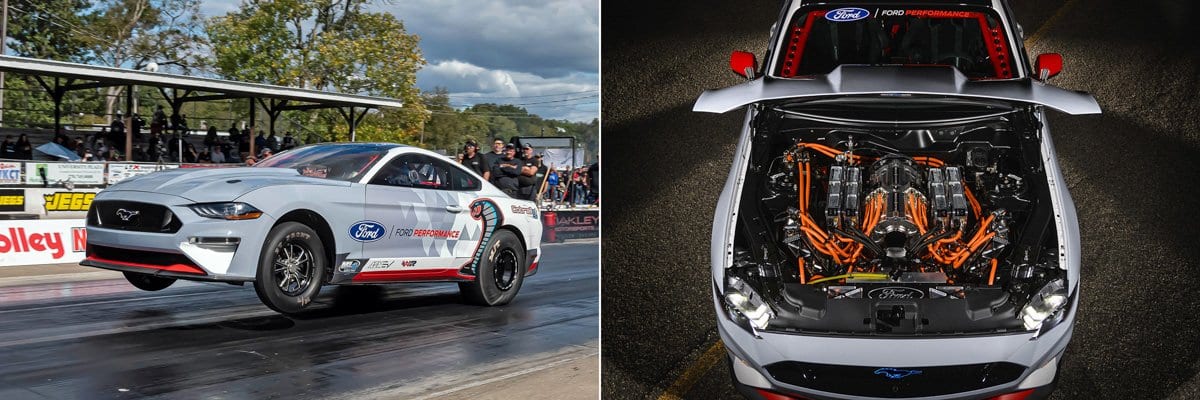

Current in the Future?
There’s little doubt that electric-powered hot rods, customs and vintage muscle cars will multiply in the coming years, especially as components get cheaper, lighter, and easier to adapt. As enthusiasts learn and experiment more, we anticipate seeing shops and home-garage builders building more vintage e-rides.
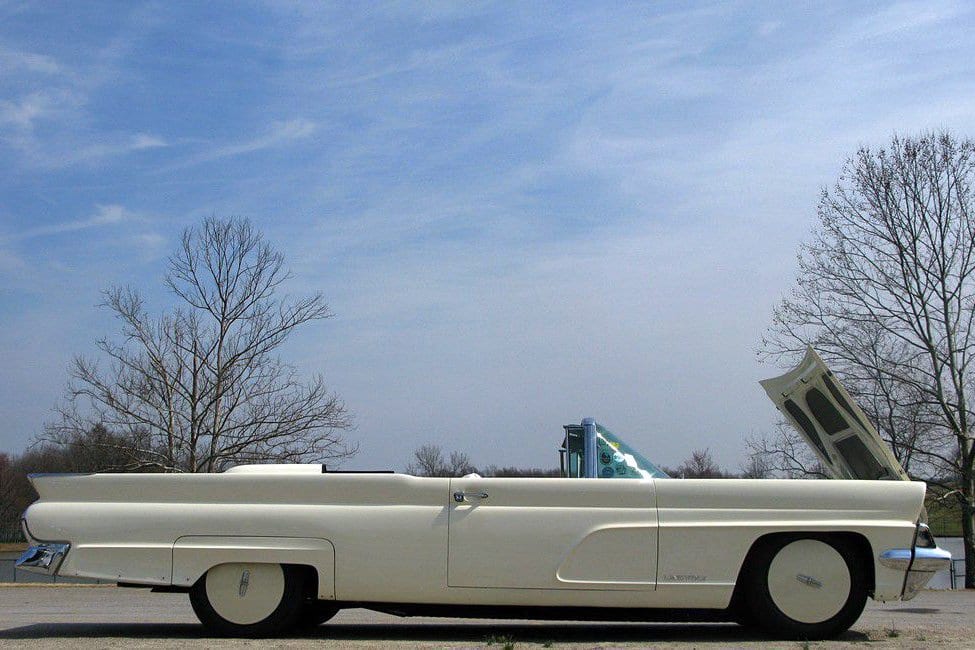
Electric power for vintage cars is not an entirely new concept. A decade ago, Roy Brizio Street Rods was part of the LincVolt project spearheaded by rock musician Neil Young. The goal was to provide electric power for Young’s massive ’59 Lincoln Continental. The technology was still in its infancy and the car was more of a hybrid; it had a 50-mile all-electric range and used an onboard generator (which could be powered by biodiesel) to charge the battery bank.
One thing to remember if you head down the electric highway for your ride: You’ll need a home-charging system, which can cost from as a few hundred to a couple of thousand dollars, depending on the power you need, your garage’s existing wiring, and other factors. Like any traditionally built project, there are always unforeseen costs along the way.
Sidebar: Home Juiced
A younger electric hybrid car owner and an old-school hot rodder walk into a barbecue joint. While eating, the younger guy says his car is a hybrid; it runs on electricity and gas when the batteries run low. “My hot rod is a hybrid, too,” the hot rodder says. “It burns gas and rubber!”
Bad joke, we know, but it illustrates the challenge for many hot rodders. Do we want to give up the sounds and smell of a high-powered, gas-burning hot rod for an electric hot rod that can outrun an old-school rod on the drag strip without making a sound, except for chirping tires at the starting line? That question will someday be equal to the decades-old Chevy/Ford/Mopar engine debate. In the meantime, though, a few home-built e-cars are making their mark.
Consider Jamieson DuRette, a Maryland high school teacher with an engineering background. Growing up he owned a ’77 El Camino. He sold it eventually but always wanted another. Fast forward to 2014 and the quest to find a second El Camino begins, but with a twist. He wants it to be electric powered.
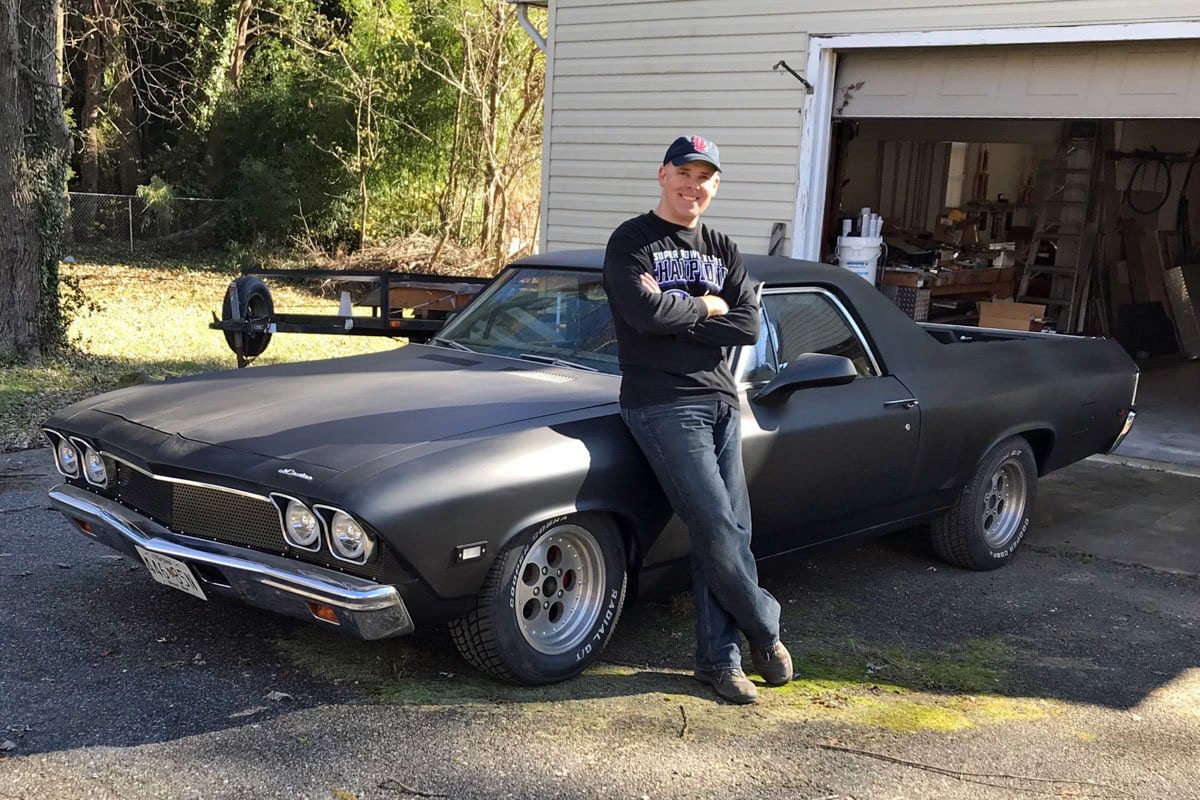
“I wanted it to be a good handling car,” Jamieson says, “but also wanted it to be a daily driver with the performance of a muscle car.”
After a lengthy search, he found the right candidate in California: A ’68 El Camino in decent shape, but without a drivetrain. No problem, since battery power was the goal.
The first three years were spent doing the bodywork, upgrading the frame and suspension and researching/sourcing parts. With the help of do-it-yourself electric conversion websites, Facebook groups, and specialized aftermarket companies, Jamieson had the El Camino on the road under battery power in 2017.
The first version provided a 90-mile range, which was more than enough for his daily commute. After a few learning-experience challenges, the driveline was strengthened with a stronger rear axle, a Lenco CS2 two-speed with reverse transmission and additional suspension upgrades.
While Jamieson has raced the El Camino at a heads-up drag racing event (no time slips), he hopes to compete in National Electric Drag Racing Association events this year. Dyno testing shows the car’s potential. A session at a local dyno shop produced two results. While in the normal mode, the car pulled 221 horsepower and 421 lb-ft of torque at the rear wheels. In boost mode, though, the El Camino maxed out the dyno’s capacity, producing at least 800 lb-ft of torque!
“With all three battery packs, it can light up the tires to 40 miles per hour,” Jamieson says.
Photos from Goodguys Archives and Courtesy of the Manufactures

